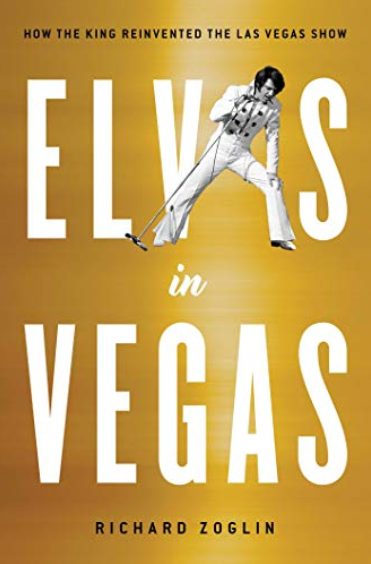I miss the Las Vegas of old. The endless submersion in Kitch (perhaps only bested by the highly recommended House on the Rock), cheap eats and drinks, low stakes table games, cigarillo smoke, and copious amounts of prime opportunities for people watching. Much of this existed historically, or at least to a greater extent by comparison, Downtown. I remember the draw to Downtown, before the gaudy “Fremont Street Experience” was installed in 1995. Less walking for sure, not to mention a much better value. A place where you could traverse across 4 or 5 casinos in a matter of just a few minutes. Where you could play 25 cent craps at the Golden Gate or $1 tables at the Four Queens, California, Las Vegas Club, Union Plaza, or the Horseshoe. If you were highbrow, you went to the $5 tables at the Golden Nugget. The dice go cold? Pick up your cocktail and head next door. You had options. For hungry gamblers, a trip over to the El Cortez or Lady Luck always offered excellent value, just off the main drag, but it was always advisable on the walk back (especially at night), to never, under no circumstances ever, stop. Always keep moving. These days, unfortunately, on the main drag downtown, you have hustlers in outlandish costumes (or virtually no costume at all) hassling you every ten seconds under that Fremont Street canopy that reeks of Commercialism.
Out on the strip, you used to have classics such as the Aladdin, Dunes, Riviera, Sands, Sahara, and while the Tropicana is still there (technically), the Moai are unfortunately long gone. The Moai most likely were too large to move at 35 feet tall, made outta solid concrete, and weighing 300,000 pounds each (they should’ve just left them there). While the Aku Aku restaurant in Las Vegas closed before my time, I did visit the Stardust on numerous occasions before it was imploded in 2007. Nothing would beat a cocktail stop at Slots-A-Fun when strolling the strip on hot summer days. Always ice cold and always just 75 cents, purchased from the guy standing across from the open door, insulated by the blaring casino air conditioning. Now we have the godawful Margarita by the Yard, at the low low price of (roughly) $35. The quantity may be there, but the value and quality sure ain’t. The authorities did keep one Aku Aku Moai, from the restaurant at the Stardust, (smaller than the ones at the Tropicana) moving it to Sunset Park, so there is that I suppose. Some of the local old timers may remember the Aku Aku lounge in Lincoln, inside the Villager Motel on O Street. Swank at a level only matched by its obvious equal, The Brothers Johnson. Unfortunately, like almost every other good thing around, the establishment tore down the Villager. The Tropicana will soon be demolished to make way for a baseball stadium, as many other icons have likewise succumbed to destruction. Anti-depressants were undoubtedly popped by any rational person after the announcement that the Mirage was sold and its iconic volcano will (eventually) be torn out to make way for a guitar shaped hotel (the property is now operated by Hard Rock International). What is the matter with these people? We should be discussing restoration of these gems to what they once were, instead of demolishing them in favor of something “new” that lacks any ounce of character. While I’m on the subject, I’d add that in almost all cases, demo and rebuild is more expensive than renovate and restore. However, the architects, designers, and consultants (and the politicians being greased by them) don’t make as much money taking that train, which is why the conductors ain’t selling it.
This book is more than merely the story of the revival of Elvis Presley’s career by virtue of his 636 sold-out shows at the International Hotel in Las Vegas. It tells a much broader story of the other performers and the history of those performances in the city. The set-up leading to the resurgence of Elvis is a worthwhile read. Yes, there is much focus on the Rat Pack and other Vegas essentials such as Tom Jones, Wayne Newton, Liberace, and Don Rickles (just to name a few), as well as the numerous all night long lounge acts. Takeaways: Most were great performers, but Frank Sinatra was a tyrant of legendary magnitude, directing his outbursts to almost all, but especially Sammy. The writing in this book is filled with all sorts of nuggets. As evidence, describing the comeback of Elvis, and the success of his first show, Zoglin summarizes:
“The show lasted an hour and fifteen minutes, and Elvis worked himself to a frazzle: pacing the stage like a panther, crouching, lunging, leaping, doing karate kicks and punches. He was audibly huffing and puffing after just a few minutes. He gulped water and Gatorade and mopped his sweat with towels handed to him by Charlie Hodge, or handkerchiefs and napkins tossed onstage by women in the audience.”
And, the downfall:
“His performances first began to be affected, by most accounts, during his August 1971 engagement. Elvis looked puffy and seemed listless onstage. His sets were rarely longer than forty-five minutes, and filled with so many fits and starts and distracting karate displays that some audience members actually walked out.”
Overall, Zoglin’s book is a formidable history of entertainment in the city of Las Vegas. Don’t be fooled by the title, it only partially describes the comeback (and downfall) of Elvis. In reality, it’s a much broader history of showbiz in Las Vegas, and the longing for those good ol’ days.
Zoglin, Richard. Elvis in Vegas. Simon & Shuster, 2019.


